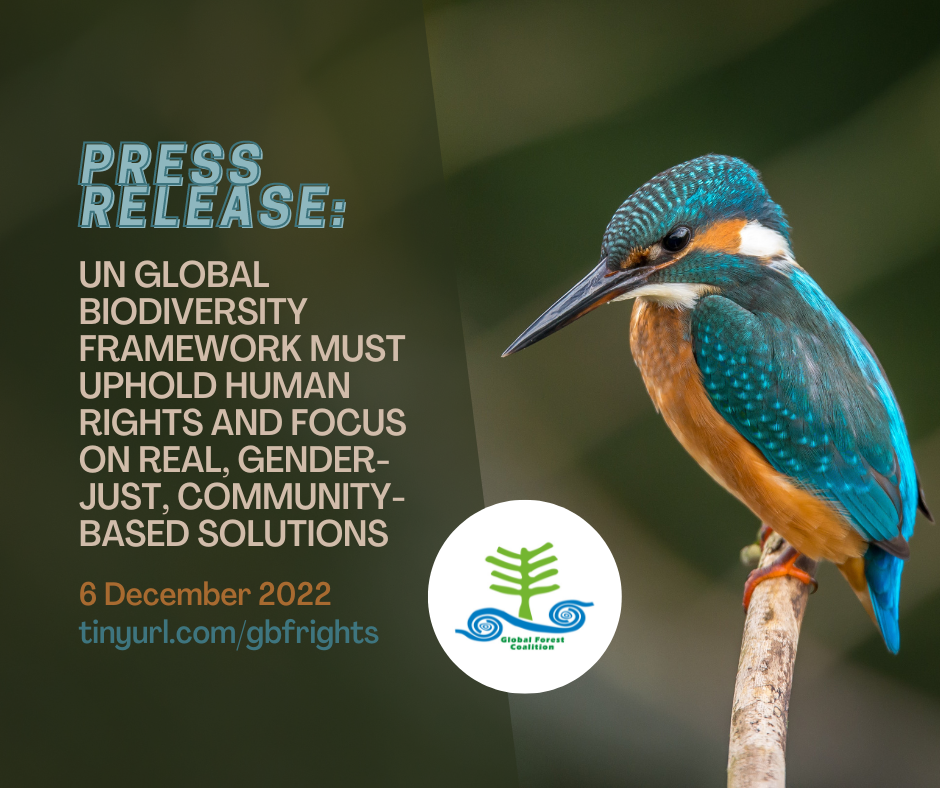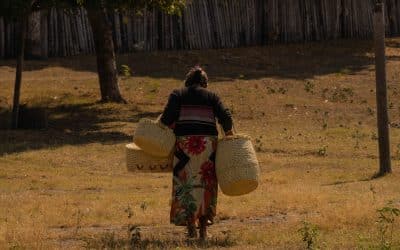La COP15 devrait fixer de nouveaux engagements mondiaux pour la protection et la conservation de la biodiversité
(MONTRÉAL, 6 DÉCEMBRE 2022) – Les États membres de l’ONU doivent s’affranchir des lobbies des entreprises et s’engager à se désengager totalement de l’élevage intensif et d’autres industries nuisibles si nous voulons avoir un espoir de lutter contre les menaces interdépendantes du changement climatique et de la perte de biodiversité, a déclaré aujourd’hui la Coalition mondiale des forêts à l’approche de la conférence mondiale sur la biodiversité COP15.
… continuer en anglais:
The fifteenth meeting of the Conference of the Parties to the Convention on Biological Diversity (COP15) is being held in Montreal, Canada from December 7-19 and is due to be the biggest biodiversity conference in a decade. World leaders are expected to agree on a new strategic plan in the form of a Global Biodiversity Framework (GBF), often seen as the “Paris Agreement” for biodiversity; a new political commitment that will generate political action and financial support for years to come.
“COP15 needs to set a framework for a new conservation paradigm, one that rejects corporate-backed false solutions and commits to addressing the true drivers of biodiversity loss,” said Simone Lovera, Policy Director of the Global Forest Coalition (GFC). “The insatiable drive for corporate expansion is our biggest threat. We don’t need to protect the planet from people, but rather ensure people’s rights to protect the planet. We need a new biodiversity framework that truly incorporates and upholds human rights, including Indigenous, women’s, and land rights.”
According to the Intergovernmental Science-Policy Platform on Biodiversity and Ecosystem Services (IPBES), the five biggest threats to biodiversity are changes in land and sea use; direct exploitation of natural resources; climate change; pollution; and invasion of alien species.
This includes the conversion of land into large-scale, agro-industrial monocultures of crops and trees, including for bioenergy, and industrial livestock farming along with climate change triggered by continued fossil fuel extraction, mining, and deforestation.
Canada, China, the European Union and other major economies are coming into this conference with the same lofty rhetoric as they did with COP27 in Sharm el-Sheikh last month. But as with the climate change conference, the negotiations are being infiltrated by corporate lobbyists seeking to protect their financial interests, which often directly conflict with the interests of biodiversity conservation.
Many of these threats are directly or indirectly financed by Parties to the Convention on Biological Diversity: Governments spend an estimated 500 billion USD annually on subsidies and other perverse incentives that promote activities harming biodiversity. Over 2.6 trillion USD is spent annually on public and private investments harmful to biodiversity. China’s Belt and Road Initiative, for example, continues to promote the expansion of extractive industries and global trade in its current, harmful form.
“Financial resources—harmful resources, that is—are the true drivers of biodiversity loss,” said Lovera. “Alignment of these financial flows with the new global biodiversity framework must be at the heart of the negotiations if it is to have any chance of succeeding. Commercialising biodiversity, making it market-dependent, or allowing offsetting are pathways to failure.”
But instead of committing to ending these harmful practices, the negotiating texts at the UN climate and biodiversity conferences continue instead to seek to “offset” these impacts through the promotion of market-based “false solutions” that seek to cover up destructive activities with carbon credits, carbon removals, net zero, net gain or loss, and Nature-positive or Nature-based Solutions (NbS).
As part of the negotiations at COP15, the EU and others are pushing for the new framework to secure the protection of a minimum of 30 percent of the world’s land and oceans by 2030. Whilst this 30 percent target seems rather unambitious compared to Sustainable Development Goals commitments to protect 100 percent of the world’s forests by 2020, it also risks promoting the expansion of fortress-style conservation measures through protected areas which often fail to uphold human rights, including women’s rights and the rights of Indigenous Peoples and forest-dependent and other vulnerable communities.
“We need to get real, and fast. Governments cannot continue to make pledges to biodiversity conservation and climate change mitigation whilst also propping up the very industries that are driving our planet to the brink of collapse; offsets just don’t work and we’re fast running out of time,” said Souparna Lahiri, senior climate and biodiversity campaigner at GFC. “Ending these harmful industries and ensuring people’s rights to protect and conserve their lands from these threats is the only solution.”
—
Representatives of the Global Forest Coalition and its member organisations from Africa, Asia, Europe, and North America will be at the COP15 in Montreal. GFC is holding a series of side events and press briefings over the conference including: a joint event with Friends of the Earth International on corporate capture on December 8; events on gender just community conservation and tourism on December 11; and a joint event on December 13 with the Rainforest Action Network, Indigenous Information Network and others on harmful and benign financial flows.
For more information or requests for interviews, please contact:
Ismail Wolff (English): ismail.wolff@globalforestcoalition.org, +33 7 88 85 28 59
Megan Morrissey (English/Spanish): megan@globalforestcoalition.org, +1 2023656900




